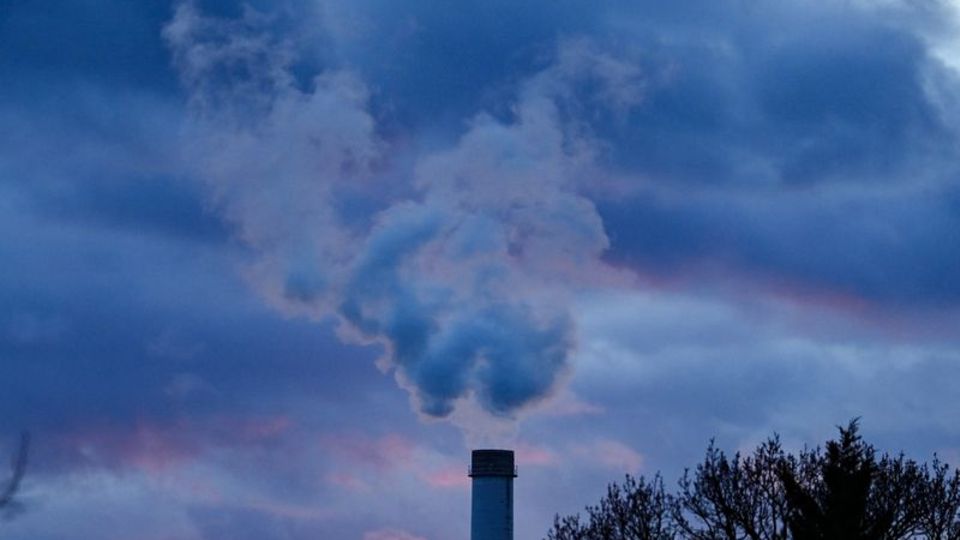Climate protection
CO2 under the North Sea? Why this path is exactly the right one
Steam rises from Germany’s largest lignite-fired power plant, Neurath II (r). It alone emits 22 million tons of carbon dioxide per year. This could be prevented with CCS, theoretically.
© Oliver Berg/ / Picture Alliance
So far it has been banned in Germany: CCS, the process for capturing CO2 from fossil fuels and injecting it into the ground. The technology is sophisticated and virtually harmless. Here are the facts.
What to do?
Federal Economics and Climate Protection Minister Robert Habeck advocates continuing to use natural gas for a while, the carbon dioxide content of which is then sucked out of the chimneys; It is essentially cleaned of the greenhouse gas afterwards. The captured CO2 will be pressed into porous rock layers deep beneath the North Sea. The process is called “Carbon Capture and Storage”, or CCS for short. So far, this technology has been largely frowned upon by Germans. Last week, Habeck presented the key points of a carbon management strategy and the draft of an amendment to the Carbon Dioxide Storage Act (KSpG).
Technically, CCS is nothing new and has been tried and tested in Europe for over a quarter of a century. But concerns in German politics are still great. The SPD and the Greens are getting very nervous about the issue. Environmental associations such as Deutsche Umwelthilfe, BUND and Greenpeace also reject the procedure. Surprisingly, the Nature Conservation Association and WWF have recently been more likely to agree with him.
Is CCS really an uncontrollable risk technology? And can it help us achieve our climate goals? Here are the facts why we should use this technology.
How does CCS work?
The most common method is amine washing. The CO2 is separated with chemicals and bound in a liquid. Finally, it is cleaned by heating and liquefied again for transport by pipeline or ship. After pressing, it turns into limestone or becomes bound in minerals over 100 or more years.
Is the technology mature?
Storage does; Norway, for example, has been running it for over 26 years. In very deep reservoirs there is a very low risk of leakage; The greatest danger is cavities from old test drillings that may be present. Cleaning the climate-damaging gases also works well – but not yet very efficiently. So far it has usually only been possible to separate too small a part. The technical procedures must be improved very quickly. Scientists say around 85 percent purification is theoretically possible.
Can you operate CCS in Germany?
Currently not. It is practically forbidden. Although there are always pilot projects for research purposes, it is now important to examine whether the North Sea idea is really feasible. Deposits are likely to be searched for soon. Porous layers of rock that are filled with salt water, with a sealing claystone layer on top, are said to be best suited. They are probably closer to 2000 meters deep.
How much Co2 “fits” under the German North Sea?
According to the Federal Institute for Geosciences and Natural Resources, there are storage facilities for two to eight billion tons of CO2 in the German North Sea; Germany currently emits around 660 million tons of CO2 per year
Is CCS worthwhile?
The Federal Association of the Energy and Water Industry (BDEW) is rather skeptical and formulates framework conditions under which CCS could be worthwhile. The problem: Capture, pipeline/ship transport and storage consume a lot of electricity. In order to clean and press one kilowatt hour of gas, you have to reckon with using around 0.4 kilowatt hours of energy. This only makes ecological sense if green electricity is used.
The estimated costs for this are 120 to 150 euros per ton of CO2; It is currently significantly cheaper for industry to continue blowing CO2 into the air and buy its way out with CO2 certificates (costs around 40 euros per ton).
How quickly could German final repositories be created?
Experts say: in ten years, maybe a little faster. Alternatively, Germany could take the captured gas abroad. Norway, with its old oil and gas fields, is planning to make a big business out of it. However, such an export is not yet legally possible; the “London Protocol for the Prevention of Marine Pollution” prevented this in the past. But that could soon change with the ratification of an additional protocol.
Is there a danger to drinking water or nature?
This can be largely ruled out, that was the prevailing opinion in science and research. There are no planned deposits under the mainland that could affect drinking water. But environmentalists fear that sea water leaks could acidify and kill shellfish and corals. Here too, research gives the all-clear.
Should CCS be used in the long term instead of adding wind turbines to the landscape?
The Geomar Helmholtz Center for Ocean Research says CCS is definitely better than emitting CO2 as usual; that would be much more damaging to the sea. And the federal government estimates that around five percent of our emissions – primarily from agriculture – will still be unavoidable in 20 years. That’s why we’re also thinking about ways to extract CO2 from the air and store it or process it into products. Nevertheless: The best and cheapest method of achieving zero emissions is to avoid CO2 from the outset; science and politics also say that this must be a priority. This is only possible through the rapid, intensive expansion of climate-neutral power plants such as wind turbines or solar systems.



